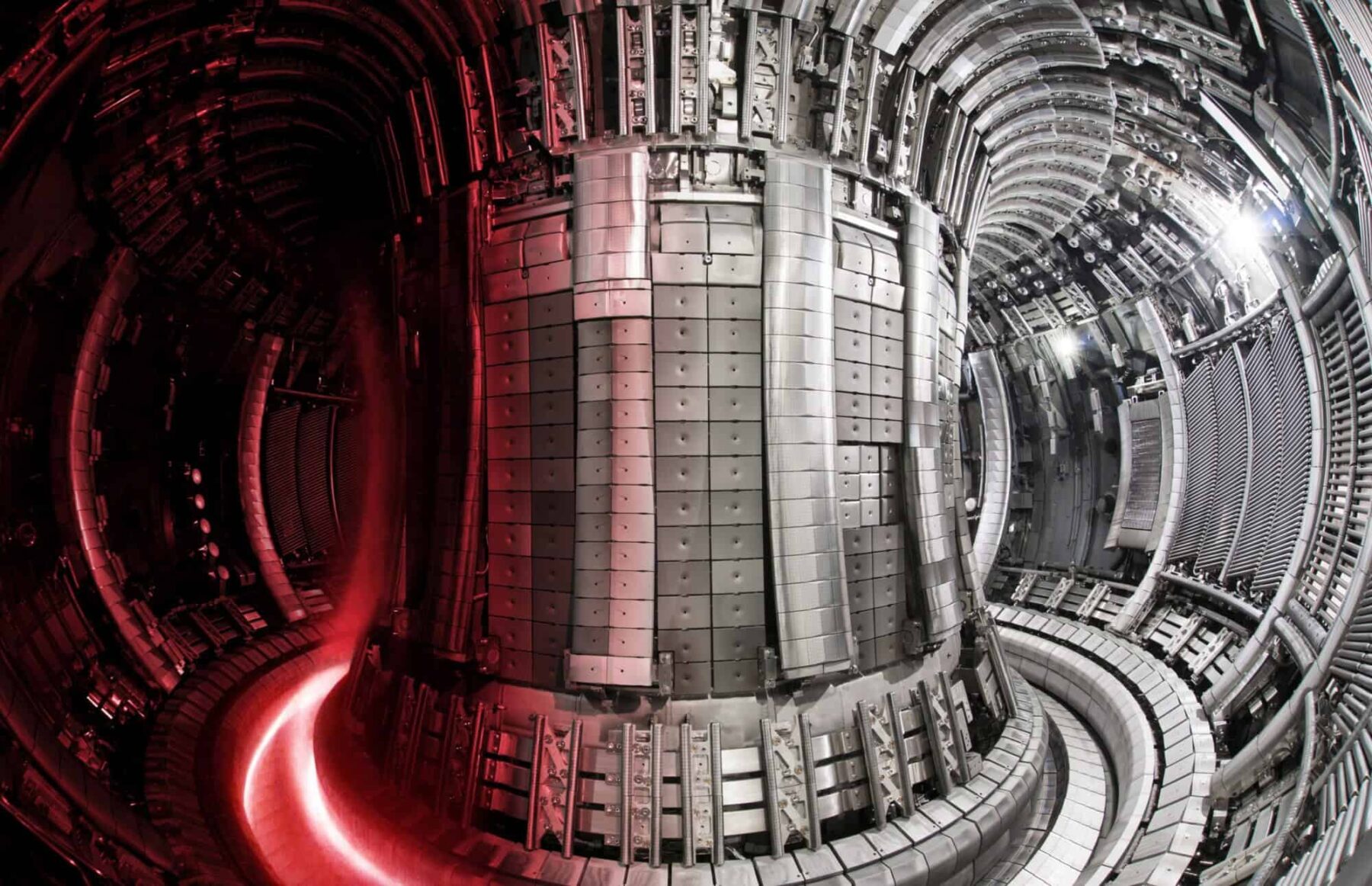A long-held dream of using nuclear fusion to create a safe, efficient supply of energy is now a step closer to reality
The prospect of harnessing nuclear fusion – the phenomenon that powers the sun – to create abundant safe, sustainable energy for the world has received a major boost, thanks to scientists at an experimental facility in Oxford.
In an experiment carried out at the JET (Joint European Torus) research site, they succeeded in doubling the previous record of sustained energy created by fusion. This brings closer the prospect of using the technology to produce vital supplies of reliable baseload electricity, which could complement renewable energies such as wind and solar to power a clean, low-carbon grid.
While existing nuclear power plants employ fission (‘splitting the atom’) to produce high amounts of heat that in turn generates electricity via steam turbines, fusion works by harnessing the heat released when atoms are fused together. It is seen as far safer than fission, since it does not create a chain reaction and produces no dangerous radioactive waste.
The fuel for fusion is two isotopes of hydrogen: deuterium, which can be distilled from water; and tritium, which is produced during the initial fusion reaction from lithium, itself widely available in the quantities required.
Research on the potential of fusion stretches back over 50 years, and progress has been slow, with fluctuating levels of funding. The latest success, though, is expected to boost growing investment from commercial companies. Meanwhile, it provides encouragement for the more extensive pilots due to be carried out at a new fusion facility in France. This is being constructed under the auspices of ITER – an international collaboration between China, the European Union, India, Japan, Korea, Russia, the UK and the US.
While fusion as a viable source of large-scale electricity supply is still likely to be decades away, the fact that such geopolitical rivals are, for now at least, collaborating on research reflects its undeniable potential.
Main image: JET interior. Credit: UKAEA / EUROfusion






